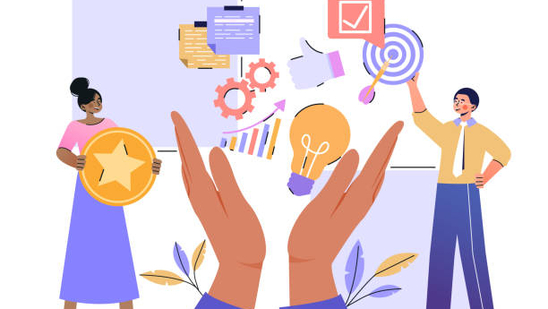New approach for accelerating youth-centric development
This article is authored by Shailja Mehta, director, Dasra.
As India races to meet its 2030 Sustainable Development Goal (SDG) targets, the underlying principle of ‘Leave No One Behind’ points the way to a winning strategy. As a leader of the Global South, India has championed equity and collaborative action, strategies which are also essential for its domestic development. Tackling increasingly intertwined issues, like youth health & well-being, inclusive economic growth and climate action, it’s clearer than ever that solving for complex developmental issues must take a holistic approach. What is needed for India’s sustained, inclusive growth is a multi-stakeholder, collaborative model of change.

According to the India Philanthropy Report 2024, the number of collaboratives established per year has surged by about five times, forecasting a positive trend in India’s social sector to expand and ultimately redefine our approach to sustainable development. Collaboratives as a programmatic approach have gained traction in recent years, through organisations such as Dasra, the Centre for Exponential Change, and Co-Impact, among others. Collaboratives are networks for action to solve for larger issues by bringing together relevant and diverse stakeholders, including government bodies, community-level organisations, funders, and even industry partners.
As collaboratives are large-scale and multi-stakeholder networks, philanthropic organisations have a particularly vital role to play in converging partners by organising and building up the collaborative. Such anchor organisations for collaboratives can foster long-standing partnerships between policymakers, funders, community-level bodies, and technical partners to effectively pool capabilities, resources, and expertise towards larger developmental issues. This encourages solutions to be participatory, additive, community-centric, and open source. Simply put, collaboratives allows for aligning of efforts instead of simply redoubling them, through a clear focus on social innovation.
Collaboratives accelerate impact by breaking silos and converging efforts for holistic development. It does so by democratising access to knowledge, by enabling cross-learning and sharing of information in a public, open-source manner. This, in turn, shifting the focus away from organisational success to field-level outcomes and promotes human-centric programme design.
Since collaboratives enable stakeholders with varying levels of funds, reach, and infrastructure to strategically join efforts, they can help plug implementation gaps and improve resource optimisation. Dasra’s 10 to19 collaborative adopted this model through a youth-centric approach, amassing over $ 60 million in funding and enabling reach to 27 million+ community members. Being a stakeholder’ applies as much to partners as it does to communities, allowing for quicker mobilisation of resources and a deeper engagement with public systems and policy through a community-first approach.
By prioritising a community-centric mindset, collaboratives allow for flexibility and opportunity to innovate new, contextual and creative solutions to age-old problems.
Collaboratives offer flexibility to engage with both established players and newer bespoke organisations, empowering representation of diverse on-ground perspectives in decision making processes. It enables this by allowing for the ability to work with a wide range of partners, towards outcomes at large, not dictated by singular organisational mandates, outputs. This in turn contributes to equal power structure, allowing for each to have influence at the decision-making table. These efforts create the space for comprehensive and holistic impact at scale.
A major advantage offered by collaboratives is their ability to build resilience to funding droughts through pooled, diversified funding. Government budgets and solitary funders cannot alone comprehensively address developmental issues, which are vast, multifaceted, and ever evolving. Collaboratives enable a multi-funder model by expanding beyond domestic donors to international funding. Pooled funding is advantageous because it can address a range of interconnected issues and enhance sustainability for programmes. Collaboratives, as a larger network, can allow funders entry and exit points, which increases funder flexibility with respect to grant tenure and purpose. This in turn helps attract diverse groups of givers, from family foundations to corporate social responsibility (CSR). Multi-funder models help to diversify programming and set long term targets despite funder exits, allowing sustained work through initiatives that can be supported for longer periods of time.
Beyond improved funding, collaboratives widen the scope for change by framing issues through a collective lens, moving away from disjointed or small-scale efforts to address complex issues. The collaborative model is not only beneficial to target groups but also enhances the efficiency and productivity of the social sector at large. It allows stakeholders to draw on each other’s expertise and experiences to make evidence or research-based pivots in strategy, program design and implementation. Knowledge-sharing facilitated by collaboratives will prove especially critical for global issues such as the climate crisis by allowing domestic and international partners to work in tandem, facilitating transfer of green technologies and technical expertise for grassroots impact.
A coordinated, ecosystem-wide approach, fostered by collaboratives, is essential to adequately address developmental concerns, which are often intertwined. Collaboratives are relevant to the entire social sector at large, benefiting diverse on-ground programs for distinct yet related concerns. It is a critical approach for climate-related issues, poverty eradication, public health improvement, and gender justice. Collaboratives serve as a fresh, comprehensive approach to sustained programming, which allow for holistic action towards inclusive development.
Collective action through collaboratives is a viable and effective way for India to deepen its efforts to meet SDG targets and allow for sustainable economic growth. The time is now for funders, policymakers, civil society organisations, and communities to reimagine their approach to change to unlock brighter futures for all.
This article is authored by Shailja Mehta, director, Dasra.
All Access.
One Subscription.
Get 360° coverage—from daily headlines
to 100 year archives.



HT App & Website







